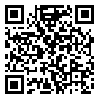BibTeX | RIS | EndNote | Medlars | ProCite | Reference Manager | RefWorks
Send citation to:
URL: http://tkj.ssu.ac.ir/article-1-183-en.html
Introduction: Noise is one of the most important physical agents in the workplace which causes numerous effects on physical and mental health. Hence its elimination or control is necessary in noisy industrial workplaces. Saab dyamples device is one of the most important sources of noise in the sub line in granite industry. Thus, this study intended to reduce noise using enclosure method in Behsaram granite company.
Methods: Due to the high level of noise produced by dyamples, in this study, the enclosure technique was used to encapsulate the noise area. After measurement and analysis, the required noise reduction was determined. A chamber with dimensions of 1.5×1.55×1.8 m3with an opening in front for observation and another opening in the back for access to control keys. The chamber was manufactured from galvanized stainless steel with 0.55 thickness and 6 kg/m2 density with a glass wool cover with 2 inches thickness.
Results: The noise level before and after enclosure was 93.63 dB and 86.91 dB, respectively. According to the measured values before and after the installation of the chamber.
Conclusion:Considering noise reduction, it is recommended that engineering controls (enclosure) in similar industries could reduce exposure of the workers to high level of noise.
Received: 2012/11/4 | Accepted: 2016/12/21 | Published: 2016/12/21
| Rights and permissions | |
 |
This work is licensed under a Creative Commons Attribution-NonCommercial 4.0 International License. |





